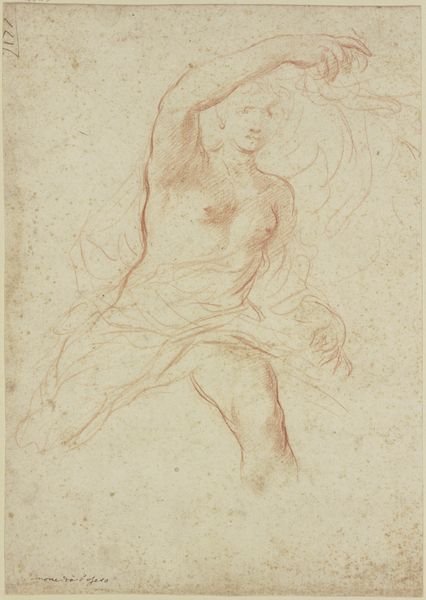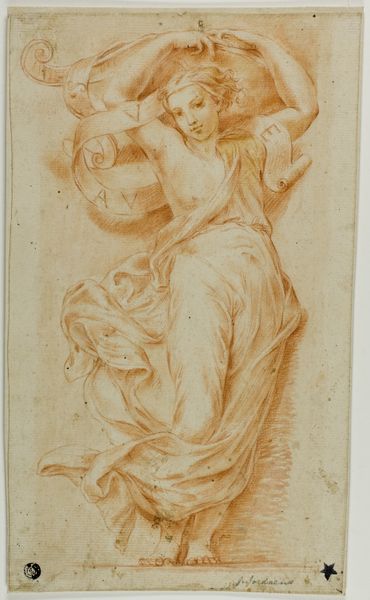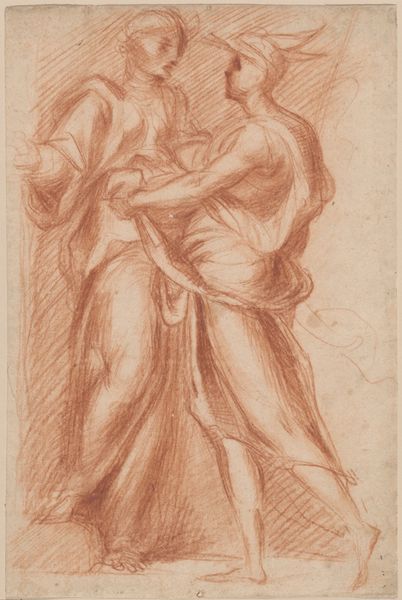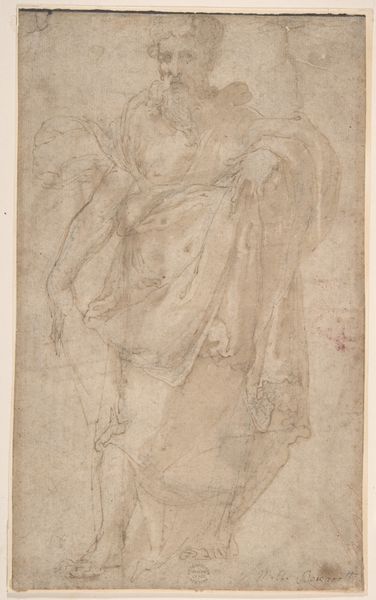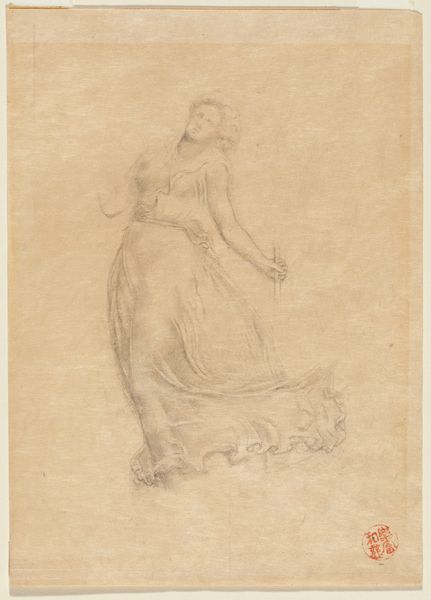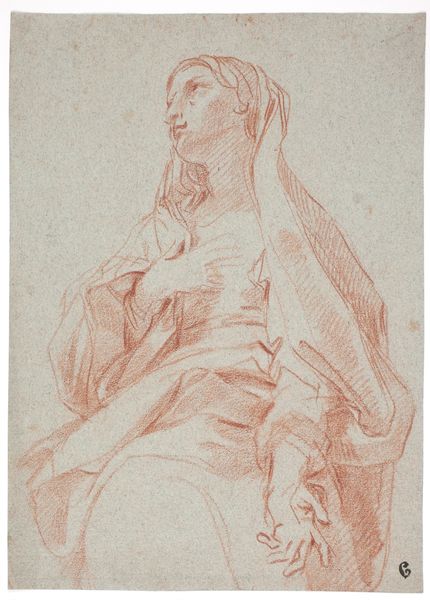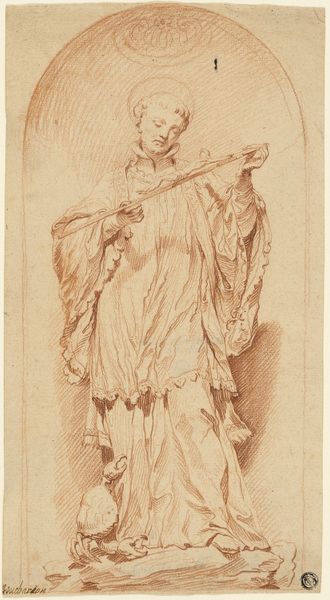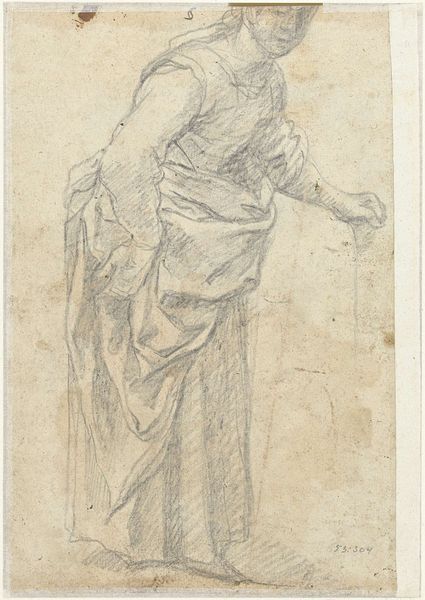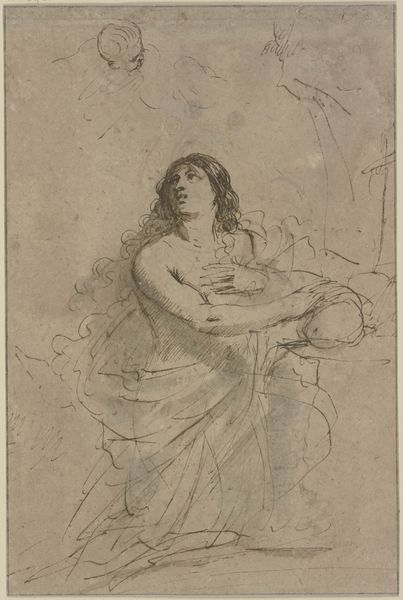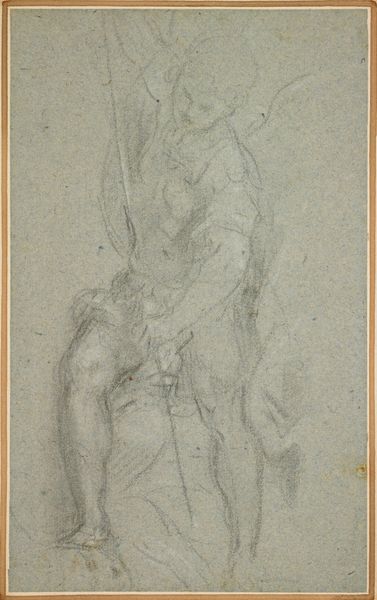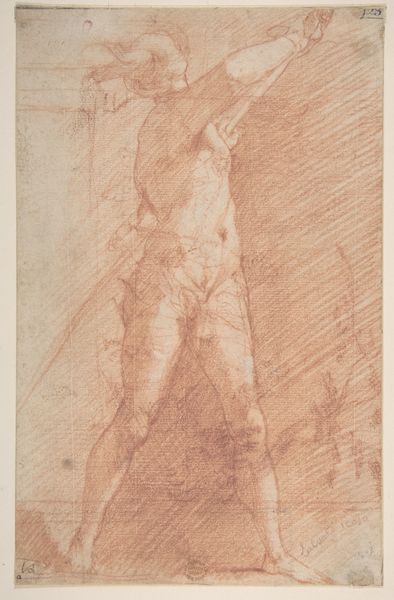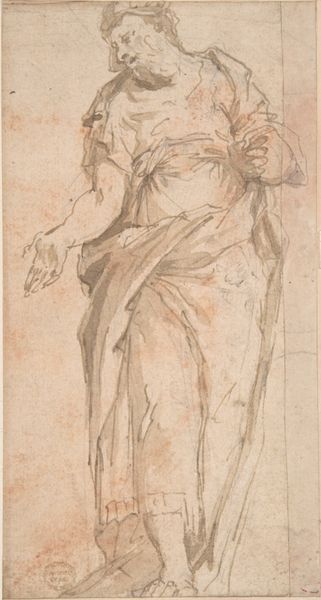
drawing
#
portrait
#
drawing
#
figuration
#
11_renaissance
Dimensions: 10 3/4 x 6 1/4 in. (27.3 x 15.9 cm) (sheet, irregular)19 3/4 x 15 3/4 in. (50.17 x 40.01 cm) (outer frame)
Copyright: Public Domain
Editor: This is "Female Figure in a Spandrel," a drawing by Bernardino Poccetti from the late 16th century, around 1583-1585. It's located right here at the Minneapolis Institute of Art. I'm struck by the way she seems both powerful and vulnerable. What is your perspective on this piece? Curator: The “Spandrel” in the title is key. The drawing was clearly intended for architectural decoration, which means it wasn’t just art for art’s sake. The female figure, likely an allegorical representation of a virtue or perhaps even a depiction of ideal beauty, was meant to inhabit a specific public space and shape the perceptions of those who viewed her. Editor: Shape perceptions, how so? Curator: Think about it. Placing this idealized female form in a prominent architectural feature reinforces specific notions of beauty, womanhood, and even civic values. Who commissioned this work, and where was it originally intended to be placed? Knowing that helps us understand whose values were being promoted and whose were potentially excluded. The drawing's very existence speaks to a certain level of patronage and artistic purpose deeply intertwined with social power. Editor: That makes me think about how art isn't just *in* society, it *creates* society too. Curator: Precisely. How might her clothing or adornments speak to those ideals being projected into society and history? Editor: Right! It's fascinating to think about how a simple drawing can unlock so much about the society that created it, shaping beliefs through architectural integration. Curator: Exactly! Considering how images gain power from where they are placed. Food for thought!
Comments
No comments
Be the first to comment and join the conversation on the ultimate creative platform.
